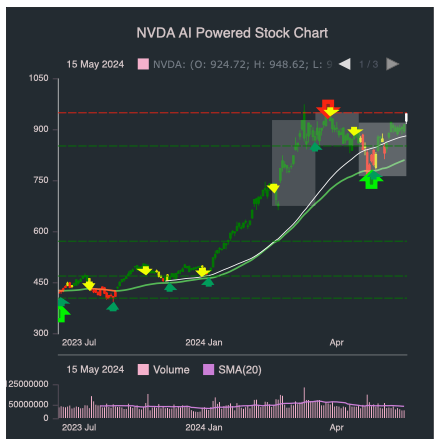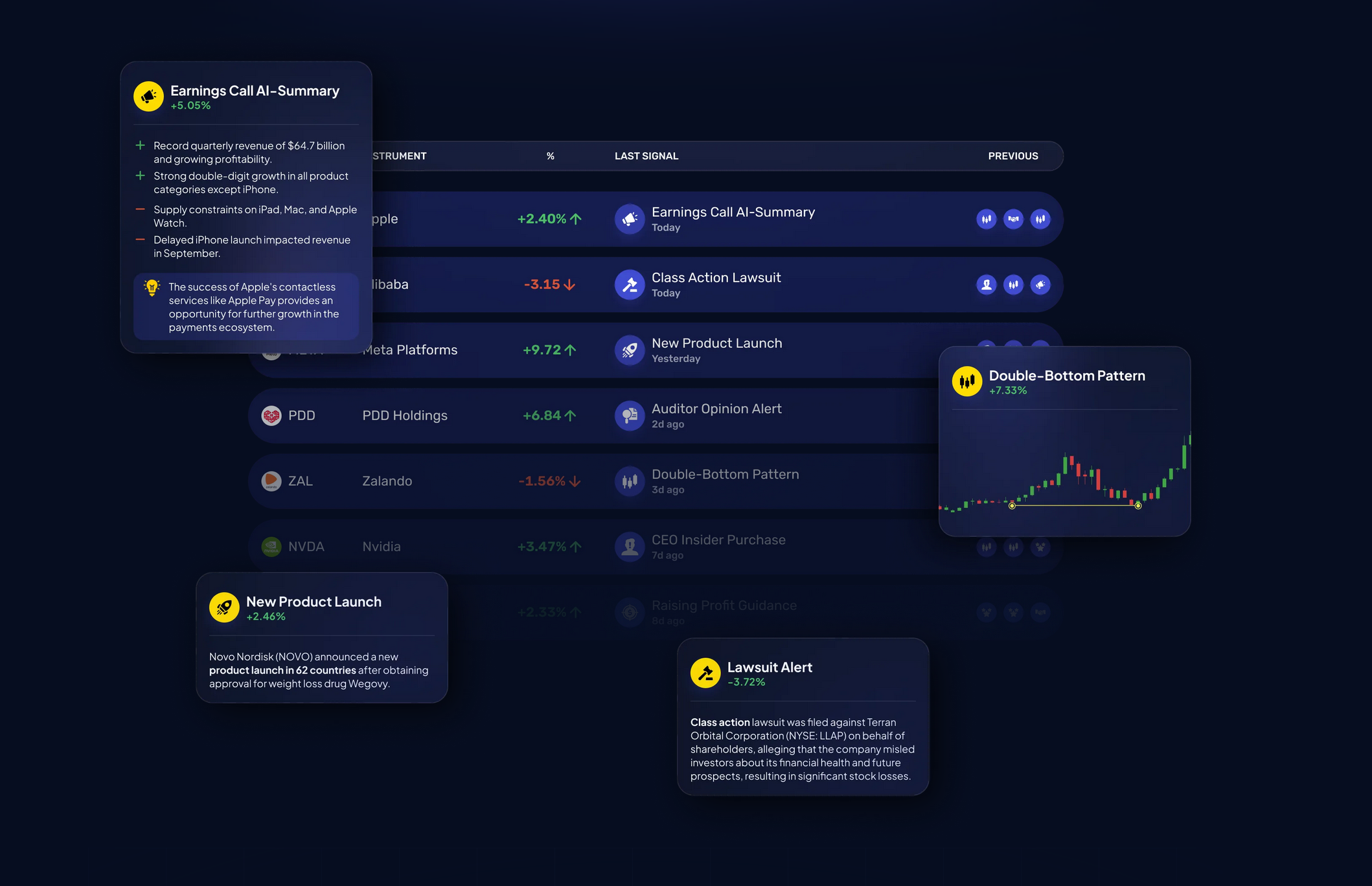It is vital to know that AI trading platforms that incorporate stock analysis and prediction are able to offer users the ability to customize their platform to meet their goals in trading, risk tolerances, and market conditions. A platform that has a range of customizable features can enhance your trading. These are the top 10 methods to determine the capacity of platforms to customize their strategies:
1. Evaluate Pre-Built Strategy Templates
A Variety of Templates: Check whether the platform you are using has templates pre-built for different trading styles (e.g. Day Trading, Swing Trading, Long-Term Investing).
The ease of use is an excellent indicator.
Performance history: Check whether the platform offers historical performance data for pre-built strategies.
2. Assessment Customized Strategy
Drag-anddrop tools: Look out for platforms that offer user-friendly drag and drop interfaces for customizing strategies.
Coding Options: If you are an advanced user, ensure that the platform is able to support custom coding.
Flexibility: Make sure the platform allows you to define entry/exit requirements, risk management parameters, and other key components of your strategy.
3. Check for Backtesting Capabilities
Data historical: Check whether there is enough records to backtest your strategies.
Customizable parameters: Ensure you can adjust parameters (e.g., timeframes, indicators) in the course of backtesting.
Performance metrics: Find out if the platform provides precise measurement of performance (e.g. win rate Sharpe ratio drawdown) for backtested strategies.
4. Evaluate Real-Time Strategy Testing
Paper trading: Make sure the platform lets you play around with your strategies or to test them without putting any money at risk.
Live testing - Make sure that you can test strategies using small amounts to see how they perform.
Real-time adjustments: Examine to find out if your plan can be adapted in real-time to the market conditions.
5. Integrate Integration with Technical Indicators
Libraries of indicators: Ensure that your platform comes with a comprehensive library of technical tools (e.g. MACD, RSI and moving averages).
Custom indicators you should be able to develop or import your own indicators which you can apply to your plans.
Make sure the platform allows you to combine several indicators to create complex strategies.
6. Check for Risk Management Tools
Stop-loss/take-profit: Ensure the platform allows you to set stop-loss and take-profit levels within your strategies.
Position sizing: Check if you can define guidelines for the size of your portfolio (e.g., fixed amount or percentage of portfolio) to reduce risk.
Risk-reward-ratio: Check the platform's capabilities to set risk/reward ratios on individual trades or strategies for trading.
7. Evaluate Multi-Asset Strategy Support
Asset classes: Make sure that the platform has strategies for a variety of asset classes.
Cross-asset Strategies: Determine if it is possible to develop strategies that combine multiple asset classes.
Market coverage: Verify if the platform is able to cover the markets you're looking for (e.g., US, international, copyright).
8. Review the automation, Execution and Execution
Automated trading - Ensure that the platform is capable of automating strategies that are based on established rules.
Types of orders: Make sure that the platform can execute different types of orders like market, limit and stop.
Latency: Make sure that the platform is able to make trades swiftly, particularly for high-frequency trading strategies.
9. Take a look at the Strategy Optimization Tools
Parameter Optimization: Make sure whether the platform provides tools for optimizing strategies parameters (e.g. genetic algorithms, grid search).
Machine learning integration Check to see whether your platform supports machine learning in order to improve and refine strategies.
Analysis of scenarios: Ensure that the platform has the ability to test strategies under various market conditions (e.g. volatile bull, volatile, or bear).
10. Review User Feedback and Community Support
User feedback: Use user feedback to evaluate the efficiency of the platform to tailor strategies.
Forums for community members: See whether you can find forums where users can discuss and exchange ideas for custom strategies.
Support resources: Ensure that the platform provides tutorials, webinars, or other documentation that can help users develop and improve strategies.
Bonus Tips
Trial period: Use the trial for free to try out the ability to customize your strategy.
Scalability - Make sure that the platform you select can handle your evolving trading strategies.
Customer support: Check if you can get help in relation to strategy-related issues or questions.
Check these points to determine the AI platform's stock prediction/analyzing capabilities and capability to modify strategies. By doing so you can be sure that you choose a platform that matches your needs for trading and allows you develop and improve your individual strategies. A platform offering flexible options for customization allows you to adjust to changes in market conditions and boost the performance of your strategy. Take a look at the recommended market ai for site recommendations including ai investment platform, AI stock, ai investing, AI stock trading bot free, trading ai, using ai to trade stocks, ai investment platform, using ai to trade stocks, ai investment app, ai investment app and more.

Top 10 Tips On How To Evaluate The Scalability Ai Trading Platforms
To make sure that AI-driven prediction and trading platforms are able to handle the growing amount of user input, data and market complexity, it is vital to determine their capacity. These are the top 10 suggestions to determine scalability
1. Evaluate Data Handling Capacity
Tips : Find out if the platform has the capability to analyze and process large databases.
Why: Scalable platform must be capable of handling the ever-growing amount of data without compromising performance.
2. Test the Real-Time Processing Capabilities of your processor
See how the platform handles live data streams, such as stock prices and breaking news.
Why: The real-time analysis of trading decisions is vital, as delays can lead to you missing out on opportunities.
3. Cloud Infrastructure and Elasticity Cloud Infrastructure and Elasticity: Take a look
Tip: Check whether the platform has the ability to dynamically scale resources and uses cloud infrastructure (e.g. AWS Cloud, Google Cloud, Azure).
Cloud-based platforms are a great way to gain flexibility. They allow the system to scale up or down according to the need.
4. Algorithm Efficiency
Tip : Check the computational efficacy and accuracy of AI models for predictions.
The reason is that complex algorithms consume a lot of energy. So optimizing them can aid in scaling.
5. Learn about distributed computing and parallel processing
TIP: Make sure to check whether the platform is using the frameworks of parallel processing or distributed computing frameworks.
What are they: These technologies speed up the processing of data and allow for analysis across multiple nodes.
Review API Integration, and Interoperability
TIP Check the platform's capability to connect with APIs from outside (e.g. brokerage APIs, market data providers APIs).
The reason is that seamless integration allows the platform to be adapted to new trading environments as well as data sources.
7. Analyze User Load Handling
Try simulating high traffic levels to test how your platform performs.
Why is that a platform that can scale has to maintain its performance as users increase.
8. Examine the model of Retraining and its Adaptability
Tip: Evaluate how frequently and effectively AI models are retrained by new data.
Why? Models have to constantly adjust to changing markets in order to remain accurate.
9. Verify Fault Tolerance and Redundancy
Tip: Ensure the platform is equipped with failover mechanisms and redundancy for hardware or software failures.
Why is that downtime in trading is costly, which is why the ability to tolerate faults is essential to allow for scaling.
10. Monitor Cost Efficiency
Tips: Calculate the costs of expanding your platform. Consider cloud resources, data storage, and computational power.
Why: Scalability should not be a burden that is unsustainable So balancing performance and expense is essential.
Bonus Tip: Future-Proofing
Ensure the platform is designed to incorporate emerging technologies (e.g. quantum computing and advanced NLP) and adapt to regulatory changes.
By focusing your focus on these elements it is possible to accurately evaluate the scale of AI prediction as well as trading platforms. This ensures that they are durable and effective, and also prepared for growth. View the top best ai trading platform for more advice including trading ai tool, best ai penny stocks, best ai penny stocks, best ai trading platform, ai investment tools, investing with ai, AI stock prediction, ai tools for trading, can ai predict stock market, AI stock price prediction and more.
